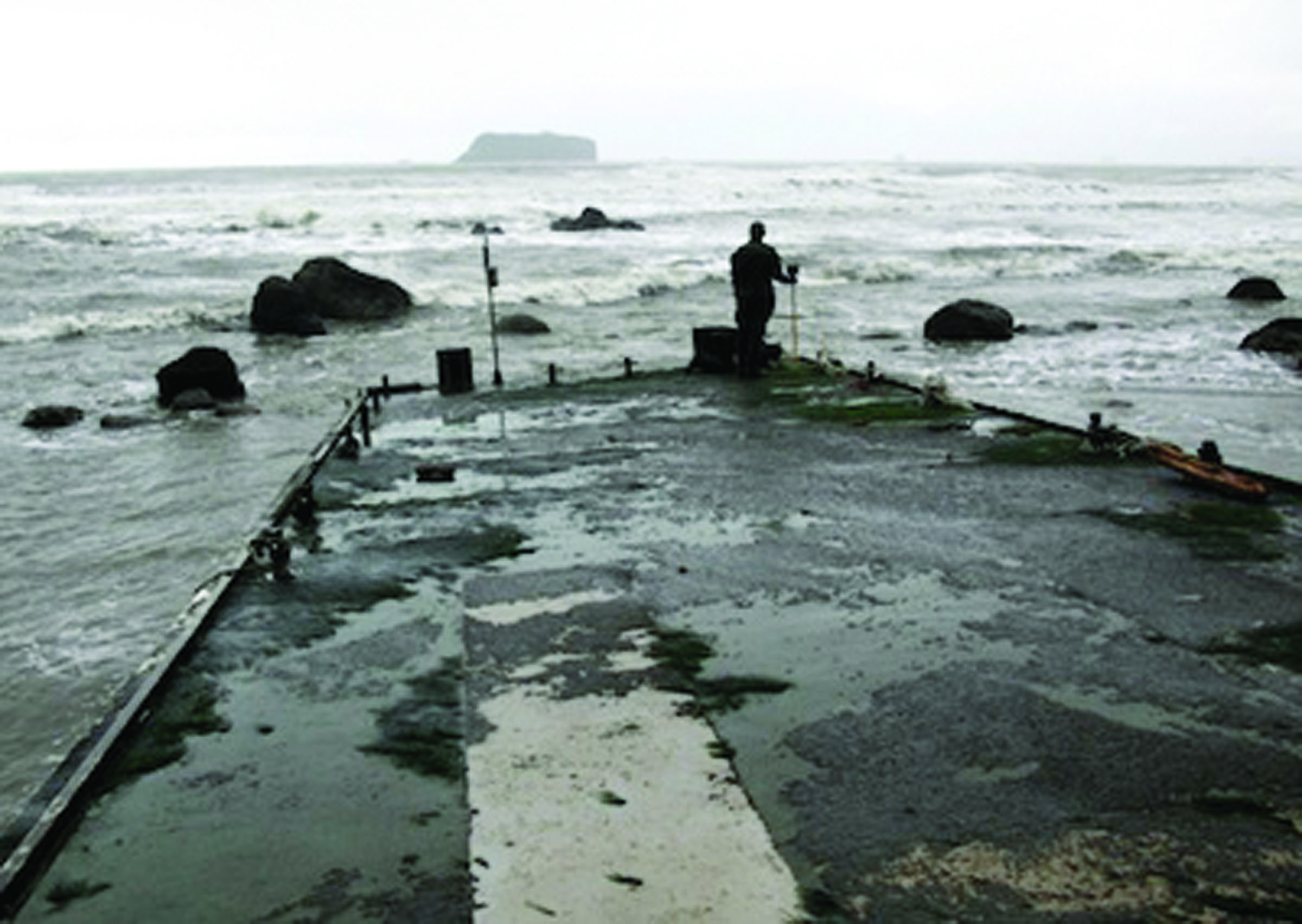LAPUSH — Researchers are analyzing samples of potentially invasive marine species they took from a 64-foot concrete-and-steel dock that swept ashore on a remote Olympic National Park beach from the 2011 Japanese tsunami.
After being turned back by a rain-swollen creek the day before, the eight-person team from the park, state Department of Fish and Wildlife and Oregon State University hiked into the beach on Friday, inspected five surfaces of the dock and took live samples of marine species for laboratory analysis.
They found Japanese writing in one of the holds, said Rainey McKenna, Olympic National Park spokeswoman, and photos of the dock are being shared with the Japanese consulate to officially confirm the dock as tsunami debris.
They began to analyze the samples at the incident command post in Forks on Friday, McKenna said.
The wilderness beach, between LaPush and the Hoh River on the northwest tip of Washington, is about a five-mile hike from the nearest road on primitive trails crossing rough terrain.
LaPush and Forks, of “Twilight” book and movie fame, are the nearest towns. The area is about 100 air miles west of Seattle.
More about the species sampled — and whether they pose a risk to the sensitive ecosystem — is expected to be known soon.
Team members noted extensive damage to the dock, likely due in part to the rough weather and continued battering of the dock on rocks on the beach, and attached a tracking beacon.
The team did not find an identifying plaque like the one found on a dock that washed up on an Oregon beach last June. That dock, from the Japanese fishing port of Misawa, was confirmed as tsunami debris.
Photos taken Friday will be used to help develop a plan to remove the dock from the beach. No time frame has been set for removal.
Crews also took samples to test for any radioactivity, which is considered highly unlikely by state Department of Health experts.
Friday’s expedition is the only time this month crews will be physically able to inspect the dock until early January because of tides and daylight access.
The incident command post will stand down beginning this weekend and resume operations when tides allow safe access to the dock.
The samples taken are being evaluated to identify any invasive species by scientists from Williams College and from the Los Angeles County Museum of Natural History.
Olympic Coast National Marine Sanctuary regulations prohibit disturbing wildlife by flying below 2,000 feet within one nautical mile of the coast or offshore islands. This includes the area where the dock has washed ashore.
Pending further information about the risks associated with the dock, the section of the park between Goodman Creek and Jefferson Cove is closed to all public entry.
“Our primary concerns are invasive species and making sure everybody is safe in this scenario,” said park spokeswoman Barb Maynes.
A Coast Guard helicopter crew spotted the dock on the wilderness beach on Tuesday.
It is similar to the 165-ton concrete and steel dock that washed ashore in June in Oregon.
A plaque identified it as one of four owned by Aomori Prefecture that broke loose from the port of Misawa during the 2011 tsunami.
The docks were used for loading fish onto trucks. One of the four docks turned up several weeks after the tsunami on an island south of Misawa.
Volunteers scraped off 2 tons of seaweed and creatures that were clinging to the Newport dock.
Among them were four species — a seaweed, a sea star, a mussel and a shore crab — that are native to Japan and have established themselves as invasive species elsewhere, said Caren Braby, manager of marine resources for Oregon Department of Fish and Wildlife
Officials won’t know for a couple years whether any of them escaped to get a foothold in Oregon, she said.
The scrapings were buried above the high water line. The dock was sterilized with blowtorches, then cut up and removed last summer.
The Japanese government estimated that the March 11, 2011, tsunami swept about 5 million tons of debris into the Pacific. Most of that sank immediately, while 1.5 million tons were dispersed across the North Pacific.
NOAA estimates the bulk of what is coming either has arrived or will in the next year or so — but that’s a rough guess.
NOAA has received about 1,400 debris reports in the past year, including bottles and buoys.
Anyone sighting other significant debris that may be from the tsunami is asked to report it to DisasterDebris@noaa.gov.
There are two government websites with information on tsunami debris — http://marinedebris.noaa.gov/tsunamidebris and http://marinedebris.wa.gov.

